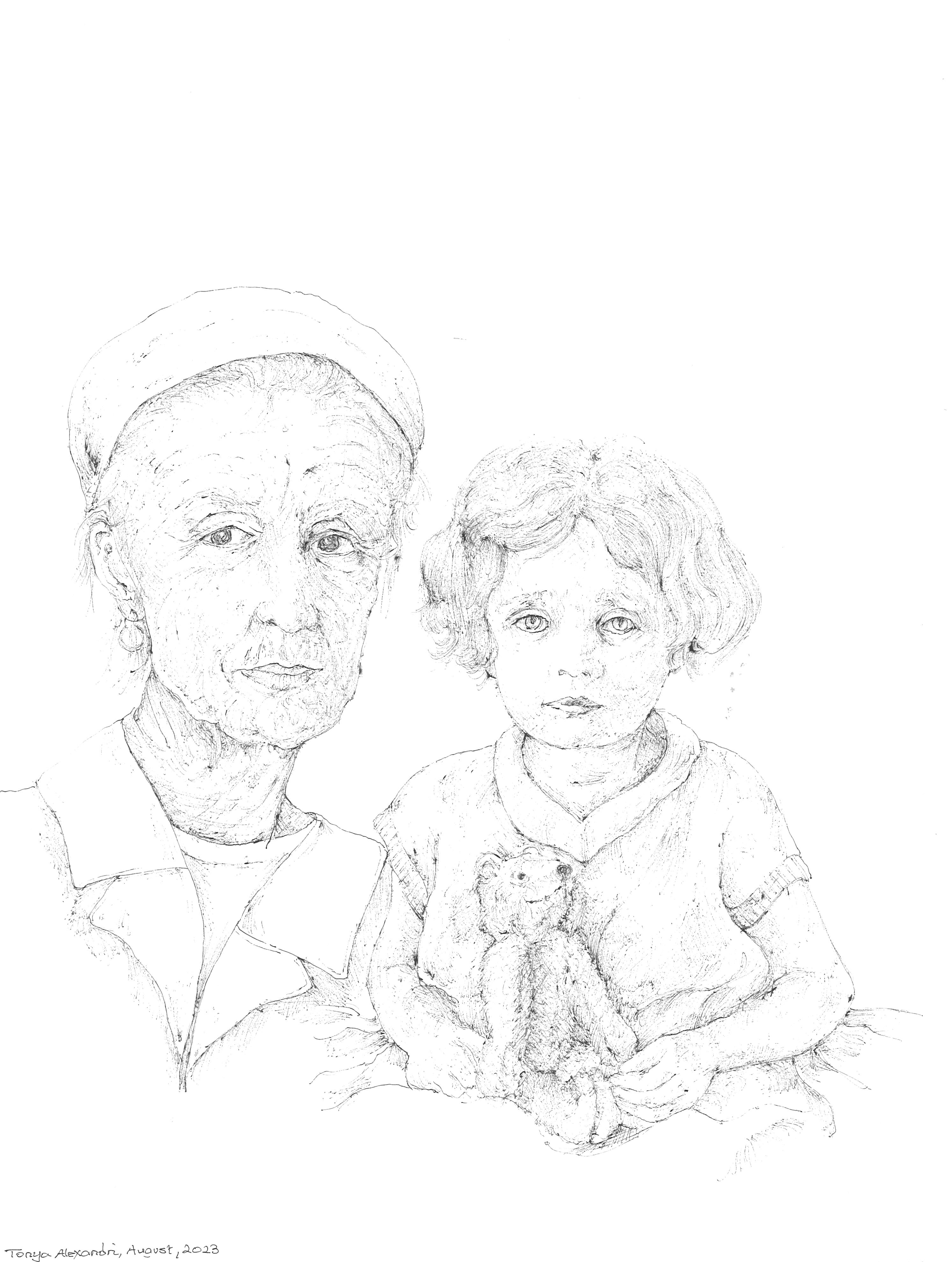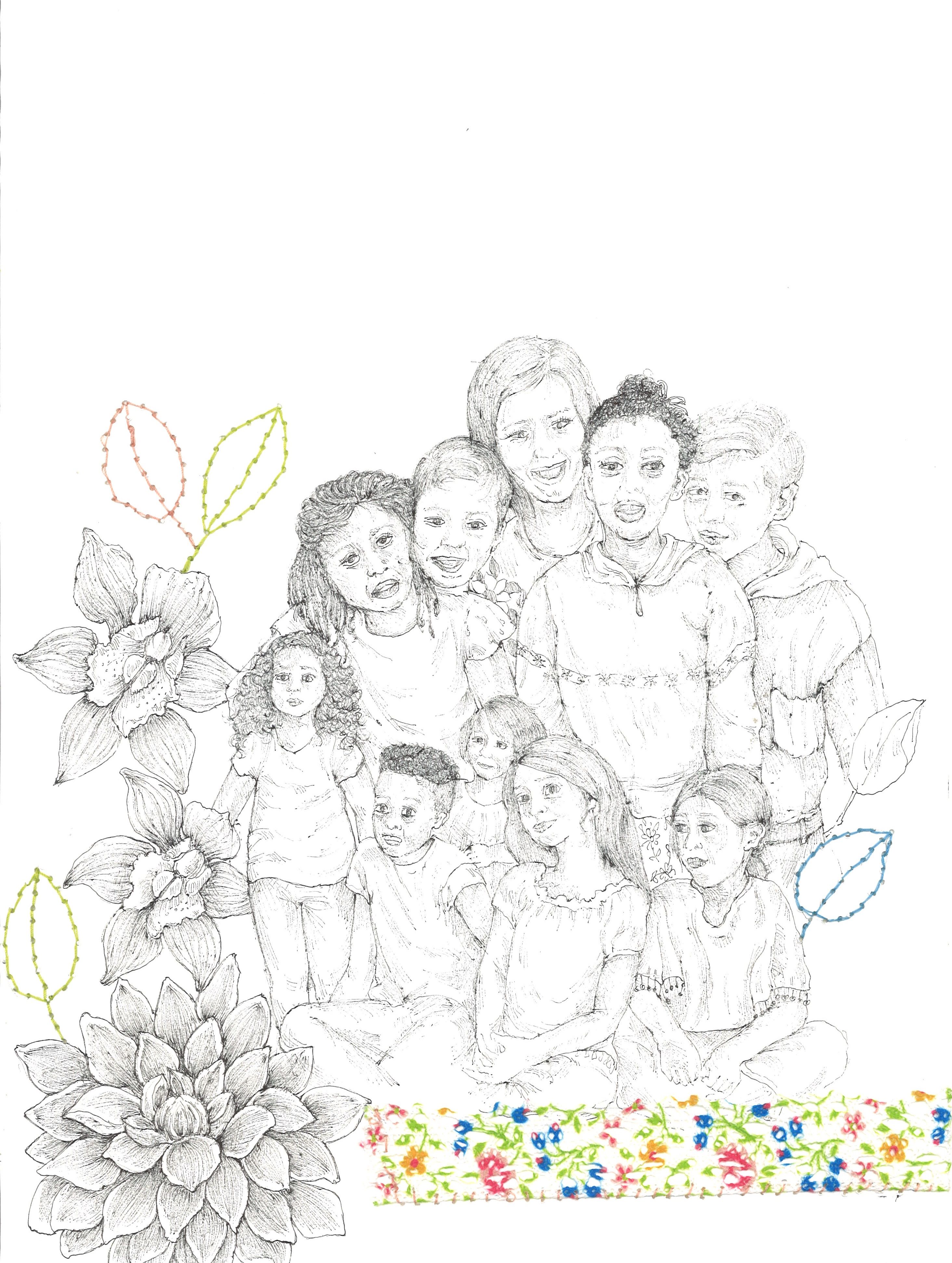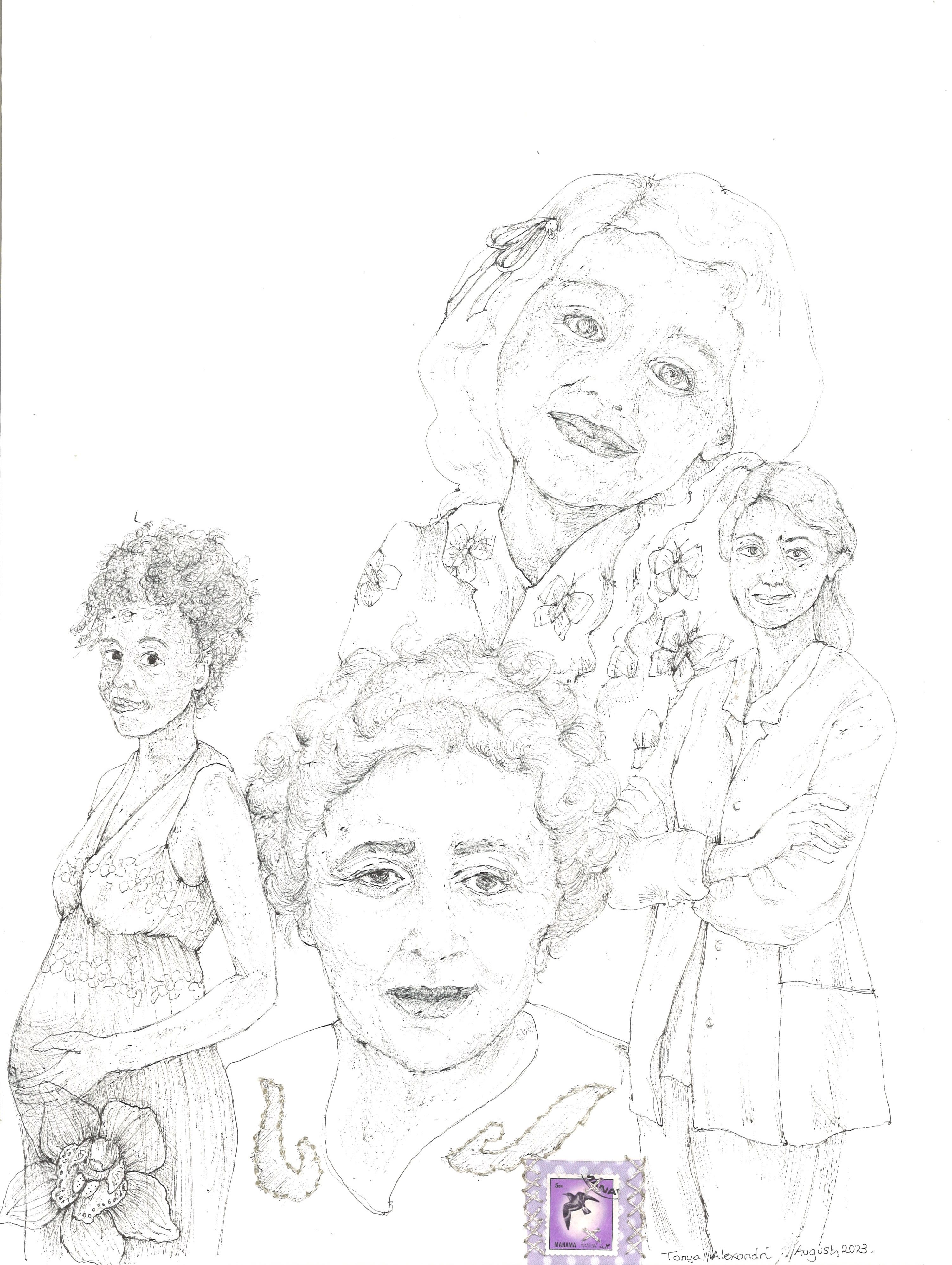Edited 10/08/2023
“A new day tainted with old ways.”
“Slowly, it dawned on me that nothing was more important than stopping violence toward women—that the desecration of women indicated the failure of human beings to honor and protect life” Eve Ensler
Most posts in this site are related, to some extent or other, to art or trauma. Today’s post is no exception, but I will be touching upon the very difficult topic of FGM / C (Female Genital Mutilation or Cutting), and thus, it could be triggering or overwhelming for people. I have not included descriptions of the variety and types of procedures included in FGM or graphic descriptions, but the topic itself and some of the videos suggested below might be triggering. This post is mostly an introduction to increase awareness and maybe inspire people to do their own research and reach their own conclusions.

I have since the previous post been diving in and out of a variety of material and sources, reading some, skimming through articles, watching available videos or documentaries, exploring art like poetry and fiction. My exploration has been focused more on breadth than an in depth analysis because I myself have found it somewhat difficult and I believe that unless someone is very cynical or completely shut down emotionally this type of trauma and reality are not easy to consider. Even the statistics are overwhelming. Statistics from the World Health Organization (WHO) show that more than 200 million girls and women alive today have undergone FGM in 30 countries in Africa, the Middle East and Asia, where FGM is practiced widely. Worldwide the number is much higher. FGM is mostly carried out on young girls between infancy and age 15 although it can take place later and more than once!. During her TEDtalk Leyla Hussein provides some numbers: 24 thousand girls are at risk in Britain every year, half a million women in Europe have undergone the practice….. [https://www.youtube.com/watch?v=uiTaA0o-7gY].
I will begin with extracts from a poem I found in the UNICEF and United Nations website pages:
A Poem for the International Day of Zero Tolerance for Female Genital Mutilation
The sun cuts through the morning sky. // It’s a new day tainted with old ways.
She sits, quiet, pensive, trying to be brave. // She thought she was ready but her beating heart betrays her……..
Hands that once loved and nurtured, now turn hard and cold.
Grandmas, Aunties, Mothers. // Carrying on a tradition that maimed them for life.
But still it must be done, the woman’s cross to bear.
PAIN, pain, pain. // It shatters her innocence and numbs her dreams.
A pain so deep it lasts a lifetime. // It cuts through her future, trimming it down to size.
Until there’s nothing there, just memories of what could have been.
STOP. Rewind. Erase. / / It’s a new dawn. // Blades replaced by books and pens.
Fears turned into aspirations. // Despair to HOPE.
No more shall she suffer in the name of religion. // No more will tradition violate her rights. // We must defend and protect her childhood.
Arise young girl, a new day has come.


The United Nations (UN) clarifies that female genital mutilation (FGM) comprises all procedures that involve altering or injuring the female genitalia for non-medical reasons and is recognized internationally as a violation of the human rights, the health and the integrity of girls and women. Tragically, millions of women have undergone some type of procedure at least once in their life. It is now well known and proven that girls who undergo FGM face both short-term complications such as excruciating pain, shock, excessive bleeding, anemia, infections, and difficulty in passing urine and walking, post traumatic stress and dissociative trauma responses, as well as, devastating long-term consequences for their overall physical, psychological and reproductive health.
It is known that although it is primarily concentrated in 30 countries in Africa and the Middle East, FGM is a universal problem, practiced widely in some countries in Asia and Latin America, and persists amongst immigrant populations living in Western Europe, North America, Australia and New Zealand. In Victorian societies some of these procedures were routinely carried out to ensure the ‘chasteness’ of women. So, these practices have taken place in white Western societies as well, at least up until the 60s. The current findings suggest that although there are hot spots and places where it is extensively practiced, it is in fact a global issue. Skimming through the literature and research articles one soon understands that it occurs in European countries and other Western countries for several reasons, one being the fact that when people immigrate to other countries they very often carry their customary practices with them.
Activities, initiatives and research are, to some extent or other, taking place in many European countries. For instance, the objective of the research work conducted by Ivana Hrvatin and her team in Slovenia was to review literature published the last decade on FGM consequences, describe and assess the theoretical and methodological approaches to treatment options and the different methods that aim to stop or reduce the continuation of FGM. They found that globally the prevalence is declining, as many actions from legal to community based programmes are being proposed. They discerned that the many known consequences, can be divided, as mentioned above, into short and long term. They found that there are treatment options documented in the available literature, but the quality of these studies were poor. Even so, there are both treatment options and guidelines of how to treat women with FGM, but health care professionals need to become both informed and sensitive to treating it, and also, able to inform women about the possible consequences and legal aspects. Finally, efforts need to be made to raise awareness and encourage open communication in society.
Specifically, the UN suggests that over the last 25 years, the prevalence of FGM has declined globally and that it could be eliminated by 2030. The Orchid Project, a British charity, also promotes a message that FGM / C can end within a generation. Orchid Project have stated that FGC can end through the idea of “organised diffusion”, where change is led by communities, and the process of dialogue between communities leads to social change. They cite similarities between how footbinding ended and FGC and how the right conditions can motivate mass change: “As with footbinding, public declarations of abandonment are vital to solidify any commitment to ending FGC. When a group of people stand up and publicly declare that they will no longer practice FGC, they are held accountable by everyone.”
The eradication of entrenched longstanding practices would require a joint effort by governments, institutions and organizations. Men would need to be informed and convinced of the detrimental effects of these practices deeply rooted in patriarchy, the need to control women and ignorance. Through open communication and raising of public awareness, secrecy, denial or dissociation of the pain and the consequences, but also the fear of being ostracized by their communities if they decide differently, could be overcome. “Their [Men’s] voices and actions can transform deeply rooted social and gender norms, allowing girls and women to realize their rights and potential in terms of health, education, income, and equality.” (United Nations website). As one can understand breaking the heavy silence around FGM is imperative. One basic factor that upholds it is the imposed silence around it. It is important to remove the fear of death, punishment, stigma and ostracizing. Hibo Wardere author of the book, Cut: One Woman’s Fight Against FGM in Britain Today writes: “There is an old Somalian proverb which says: ‘You can’t hide a dead body from its grave’. Its meaning? You can’t hide from your problems. Abuse thrives in secrecy, whereas out in the open it wilts and dies. The more we can bring abuse of any kind out into the world, where we can examine it and talk about it, the more likely we are to see the back of it.”
FGM is condemned by a number of international treaties and conventions. Article 25 of the Universal Declaration of Human Rights states that “everyone has the right to a standard of living adequate for health and well-being,” and this statement has been used to argue that FGM violates the right to health and bodily integrity. Defining FGM as a form of torture brings it under the rubric of the Convention against Torture and Other Cruel, Inhuman, or Degrading Treatment or Punishment. Moreover, regarding FGM as a traditional practice prejudicial to the health of children and minors, it violates the Convention on the Rights of the Child. Fortunately, national legislations against FGM are also in place in many countries, but further coordinated and systematic efforts that would engage whole communities and would focus on human rights, gender equality and the consequences suffered by girls and women, and ultimately families and communities, are required to eradicate FGM.
An important early voice against FGM was that of Fran P. Hosken [born in Austria, 1920-2006], an American designer, writer, feminist, and social activist, who founded the Women’s International Network in 1975, and published a journal on women’s health issues that became known, in particular, for its research into FGM in an attempt to end the practice. Hosken became aware of the problem in the early 70s when she went to Africa as an urban planner. The Hosken Report [1979 / over 400 pages] was the result of extensive research and field work that established that more than 74 million women and female children are mutilated by female genital operations in Africa alone. They found that the operations were also practiced in many parts of the Middle East and Indonesia and Malaysia where they were performed at the time in a less damaging form. This paper lists the countries where instances of FGM had been reported and includes case reports from many countries. The ethical issues posed by genital mutilation are also discussed.
Hosken critiqued patriarchal power and theories of misogyny that underlie many of these practices. She was the first to link domestic violence and FGM. She wrote: “What needs to be examined is what influence such customs have on the character formation of boys who learn such behavior from their fathers.” She believed that liberty concerns all and she believed in the individual’s rights to health and bodily integrity. She rejected cultural relativist “tolerance,” and opposed the growing trend to “solve the problem of FGM” through medicalization. Through emphasizing the threat to health rather than gender inequality, some advocates hoped to avoid the aggression or resistance that direct attacks on patriarchy could evoke and believed that pointing out the negative physical consequences of FGM would suffice to bring about change. However, she discerned the fact that even though the medicalization of FGM/C, proposed by some health professionals, could reduce the incidence of its complications and remove the torturous pain during the process, it would not reduce the long term complications of FGM. She also claimed that its performance violated the code of medical ethics, and ultimately, it would result in a setback in the global efforts to eradicate this harmful practice.
Even though I have no doubt in my mind that FGM is a form of violence, a means of control that is detrimental to women’s health and psychological well-being with effects rippling out into the familial and broader social environment, I can understand where the people that perceive FGM as a rite of passage and a practice culturally approved and steeped in tradition may come from and the multiple underlying reasons. It is therefore, important to formulate culturally sensitive plans of action for the total eradication of female genital cuttings because ultimately, when all is said and done, they are forms of mutilation, a violation of basic human rights with severe physical and emotional consequences. As one African survivor and activist for the eradication of FGM noted… culture is music, art, food….. I would add that it definitely is not violence passed down from one generation to another. Additionally, there is no religious book or scripture that proposes FGM. It is a means to control and to keep subjugated.
I also read Greek and Cypriot articles I found online. ΑΓΓΟ is the Greek term for FGM. There was a lot of emphasis on the fact that the medicalization of FGM is not a solution. According to Dr. Christina Kaili [researcher and program coordinator at the Mediterranean Institute for Gender Studies and Specialist Scientist at the Department of Social and Political Sciences of the University of Cyprus] “there are indications that at least in three European countries, namely the United Kingdom, Italy and Switzerland , doctors or traditional healers have mutilated girls. There are many other countries where doctors may be practicing this practice illegally. The European Parliament and the World Health Organization have condemned the medicalization of the practice. With or without anesthesia, FGM violates the rights of the woman / girl. Doctors do this either out of ignorance or out of fear of interfering with what they misunderstand as “cultural tradition”. European countries must develop guidelines for the training of doctors, midwives and gynaecologists; thus combating the ignorance that characterizes their decisions. Repeating the practice after childbirth cannot be carried out under any circumstances, as it is against Medical Ethics, puts the woman’s health at increased risk and is a criminal act in some EU member states.”
As I mentioned above, FGM does not only hurt girls, from infancy on, and women, but its diverse effects ripple out. For instance, according to the World Health Organization (WHO), FGM exacts a crippling economic as well as human cost. (https://www.who.int/news/item/06-02-2020-female-genital-mutilation-hurts-women-and-economies) Dr Ian Askew claims that “FGM is not only a catastrophic abuse of human rights that significantly harms the physical and mental health of millions of girls and women; it is also a drain on a country’s vital economic resources.” It has been calculated that the total costs of treating the health impacts of FGM would amount to 1.4 billion US$ globally per year, which for individual countries would near 10% to 30% of their entire yearly expenditure on health on average.
ART: Books, Films, Documentaries
** Two filmmakers, Nabaz Ahmed and Shara Amin, spent almost a decade reporting the greatest taboo subject in Kurdish society: female genital mutilation. Τhey persuaded people to talk about the effects of FGM and the film they made helped get the practice outlawed in 2011 and decrease the practice by over 60%. The story of their decade-long fight against FGM has been made into a documentary by the Guardian and BBC Arabic (https://www.theguardian.com/society/video/2013/oct/24/fgm-film-changed-the-law-kurdistan-video)
** The film, A Girl from Mogadishu, is a true story inspired by the life and work of activist Ifrah Ahmed. The film follows Ifrah from childhood in a refugee camp in Somalia where she was born and subjected to FGM, to Ireland where she is eventually given political asylum. She then goes on to become one of the world’s foremost international activists against gender-based violence.
** The film Efun (Flesh) by Anita Abada from Niigeria was part of the WHO Film Festival and it won the 2021 prize for health educational film for youth
** The documentary CUT: Exposing FGM by Dr John Chua. In this film we understand that FGM is not an African or non Western country problem only, but since Victorian times it has been practiced in White cultures and societies, too. Dr Renee Bergstrom talks about her experience of FGM in 1947 at the age of three performed by a doctor. We get to learn about famous proponents of these practices like Dr Isaac Baker Brown and Dr John Harvey Kelloggs [19th and 20th century].
** American writer Alice Miller brought the issue of FGM to the attention of the public in 1992 with her novel, Possessing the Secret of Joy.
To conclude, one cannot consider or discuss FGM without touching upon the darkest and deepest wounds of society. One cannot discuss or think about FGM without including gender inequalities, sexism, racism, patriarchy, control and social and economic oppression. FGM is in some sense a means to massively generate post traumatic stress. It does not harm the victims only, but spreads like a virus and compromises the growth and thriving of families and communities.
